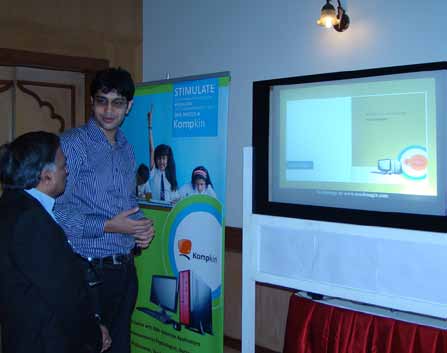Response time of the order of a few microseconds can be achieved using HSP technology. In comparison, with LCD technology, the response time is of the order of 2-8 milliseconds, and the faster the LCD, the higher the cost. Another recent materials related development in the display space is the use of polyester films for flexible displays and touch screens. As the market evolves, customers and end-users are demanding flexible display technology with reduced device thickness, improved economics and productivity, and enhanced optics. Polyester films help meet these needs.
Last year, DuPont Teijin Films in-troduced Melinex Thin heat-stabilised polyester films that feature superior optical clarity, smooth surface, thin 50-micron profile, low shrinkage and predictable dimensional changes in variable heat and moisture conditions, making their dimensional stability comparable to thicker films and suitable for vacuum processing.
Last year also saw the introduction of adhesive-coated polyethylene terephthalate (PET) optical films and polyethylene naphthalate (PEN) films for mount/demount applications where a carrier is used for processing. These are widely adopted in the making of flexible displays.
This year’s Consumer Electronics Show (CES) in Las Vegas too featured quite a few material innovations. 3M introduced patterned transparent conductors (PTCs) for such applications as projected-capacitance touch screens and antennae. “PTC materials offer improved performance of the projected capacitive sensor by supporting narrow bezel capability and faster sensor-response times with excellent optical performance,” said a company spokesperson.
The conductive material in 3M’s PTCs is usually thin silver wires embedded in an optical polymer sheet. Flexibility and increased conductivity are the main advantages of PTCs. Typically, sheet resistance is in the vicinity of 20 ohms per square, compared to 100-300 ohms per square for older indium-tin-oxide (ITO) technologies.

Organic leds—still pocket-sized!
An OLED is basically a light-emitting diode in which the light is emitted by a film of organic compounds in response to an electric current. This layer of organic semiconductor material is sandwiched between two electrodes, of which at least one is transparent.
An OLED display functions without a backlight, is thinner and lighter than an LCD, and can display deep black levels. It has a faster refresh rate, higher contrast, wider viewing angle and better colour reproduction. It is also believed to be much cooler than conventional LCDs or LED-backlit LCDs. The power drain is also very low. All this makes OLED displays ideal for mobile instruments.
Although these benefits are desirable in larger displays too, OLED televisions and other large-sized displays have not yet gained momentum due to multiple problems. The current generation of OLEDs emits less light per unit area than inorganic solidstate LED light sources and their brightness is lower than LCD screens’. Also, since these use organic materials, they degrade over time.
“The lifespan of OLEDs is of concern in terms of manufacturing, toxicity, and scalability to different sizes and configurations,” adds Raju. Since portable displays are used intermittently, the shorter lifespan of organic displays is less of an issue than with television or computer monitors.
The cost of OLEDs is also very high. Although companies like Sony, LG and Samsung have come up with OLED televisions, they are yet to classify as mainstream models.
In mid 2010, DuPont announced that it could produce a 127cm (50-inch) OLED TV in two minutes with a new printing technology, and that these televisions could have a lifespan of 15 years even if used for around eight hours a day. The cost of these televisions would also be quite less, the company said. However, DuPont is still figuring out how to scale up this technology to volume manufacturing at low costs.
Acronym war in the mobile space
As of today, the OLED war is happening mainly in the mobile space. The air is filled with buzzwords ranging from Super-LCD and AMOLED to Super-AMOLED.
The addressing scheme used by OLED displays can be either passive-matrix (PMOLED) or active-matrix (AMOLED). The latter comprises a matrix of OLED pixels that generate light upon electrical activation. This is integrated with a thin-film transistor (TFT) array, which functions as a series of switches to control the current flowing to each individual pixel.
AMOLED displays consume less power than PMOLED displays, and are a step towards low-power, low-cost and large-size applications such as televisions. AMOLED technology is becoming quite popular in smartphones and digital cameras today. Certain manufacturers have started integrating the production of capacitive sensor arrays in the AMOLED module fabrication process, thereby adding touch capability to AMOLED displays. Samsung markets this technology as Super-AMOLED. Brightness and degradation issues have also been addressed to a certain extent in this new version.






